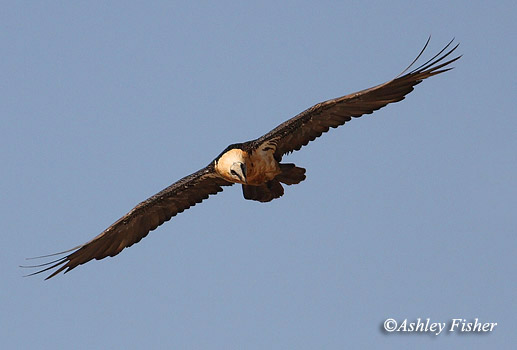Our primary reason for visiting Spain was to study, video and photograph Scopoli's and Yelkouan Shearwaters in the Mediterranean Sea, but more on that later. We also wanted to see as many of the north eastern Spanish specialties as time would permit. Here's some images and video footage of a magnificent Lammergeier that gave excellent views at the vulture feeding station at Santa Cilia.
Lammergeier
Covering the latest Scilly Pelagic news, seabirds worldwide & rare birds in Scilly...
Friday, 30 September 2011
Thursday, 29 September 2011
Spain trip
Some images and video (see below) from the vulture feeding station at Santa Cilia in the foothills of the Spanish Pyrenees.
Griffon Vulture
Griffon Vulture
Monday, 26 September 2011
Sunday, 25 September 2011
Thursday, 22 September 2011
A long time coming...
While seabirds have become my passion, I have maintained my lifelong burning desire to find a mega yank passerine. Finally, at the age of 56, I did it - a Baltimore Oriole. Bob.
Wednesday, 21 September 2011
Black-bellied Storm-petrel off Lanzarote - Second for WP
On the 10th September a group of Spanish seabirders and good friends of ours experimented with a deep sea pelagic trip off Lanzarote. The reward was instant with a Black-bellied Storm-petrel, the second for the Western Palearctic. The bird was spotted by Daniel Lopez-Velasco and photographed by Miguel Roucu (see below). We were in Spain at the time studying shearwaters of the Mediterranean with Ricard Gutierez and got the news red hot and were completely gripped. Well done to the pioneering Spanish team!
 |
| Black-bellied Storm-petrel off Lanzarote by Miguel Roucu |
Friday, 2 September 2011
Madeiran Storm-petrel first for Britain - reasons to celebrate?
by Bob Flood
 |
| Which population did this Madeiran originate from? (Photo: Joe Pender) |
Other blog sites have announced that the 'Scilly Madeiran' is now on the British list. Taking it that this is true, is it time for Scilly listers to celebrate? Not really, given taxonomic developments that we have summarised in our new Multimedia Identification Guide to Storm-petrels & Bulwer's Petrel. DNA analysis shows that a number of distinct populations breed in the northeast Atlantic. Genetic isolation led to speciation and some authorities already recognise four species in the northeast Atlantic, with BirdLife recognising the population off the Azores as a good species with common name Monteiro's Storm-petrel. Whilst we think that it is too early to accept the four species taxonomy suggested in several publications (since research is still ongoing) we recognise that this taxonomy, or something like it, in the coming years will become accepted.
Is it possible to know which population (and in due course which species) the Scilly Madeiran belongs to? The short answers is, 'no'. Our studies to date show that there are no known reliable field characteristics to separate these cryptic popluations (taxa if you like). Even if field characteristics are worked out, and that is a big if, the level of detail recorded in our notes of the Scilly bird and the sole useful photograph are insufficient for future identification. The Scilly bird was in relatively fresh plumage and so there were no clues to its origin in this regard.
What does this mean for Scilly listers?
For the reasons given above, I took Madeiran off my Scilly list several years ago. It is technically correct to tick this bird now using the taxonomy operated by BOURC, but for those who have ticked Madeiran, you'd best keep a bottle of tipex nearby.
 |
| Notes by Tony James |
Subscribe to:
Comments (Atom)






